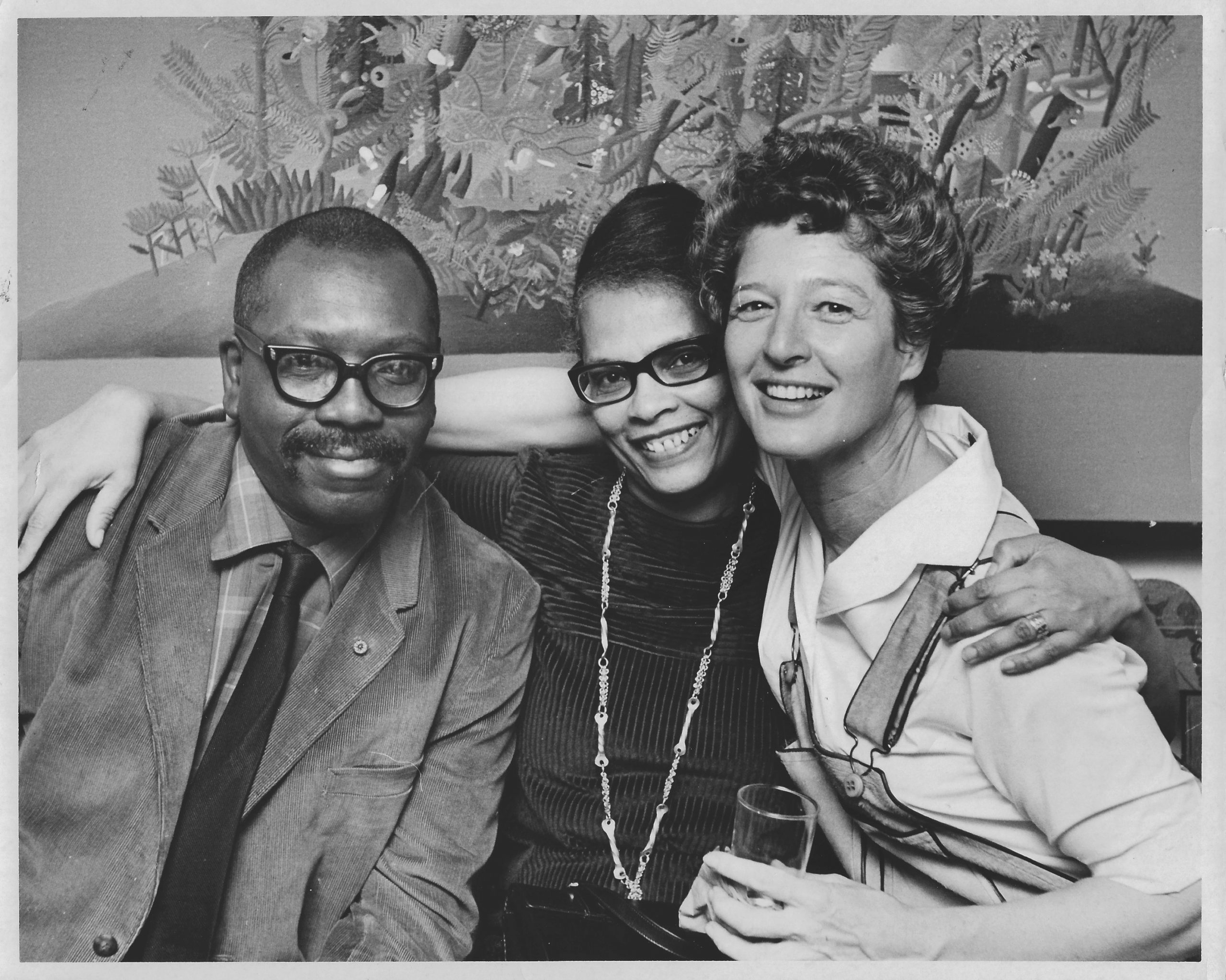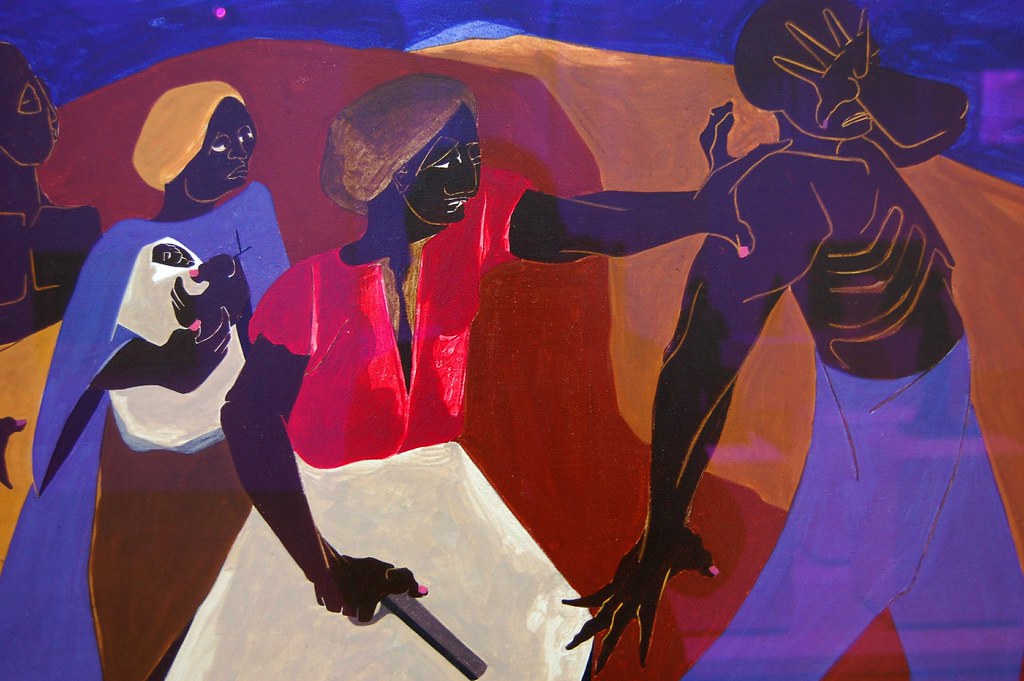“The paintings which I propose to do will depict the struggles of a people to create a nation and their attempt to build a democracy” – this is how Jacob Lawrence described his project in 1954. Over sixty-five years later his proposal has, if anything, become only more urgent. Two days after this exhibition closes, Americans will vote in what is arguably the most significant election in a generation, an election that will measure our commitment to preserving that democracy, the struggle for which was Lawrence’s mighty theme.
Jacob Lawrence is among the most recognized and celebrated African American painters of the twentieth century. Yet the series to which this exhibition is devoted – Struggle: From the History of the American People (1954-56) – has received relatively scant attention. Lawrence intended an immensely ambitious project: a series of sixty paintings beginning with European colonization and ending with World War I and America’s ascendance to the world stage. Ultimately, however, the series would comprise thirty small-scale tempera paintings on hardboard, detailing significant historical moments in the period lasting from 1775 to 1817; moments which will often underscore the role, and the experience, of people of color in the creation of the republic and its formative years.
The panels commence with a painting that draws its title from Patrick Henry’s famous “liberty” speech defending the colonial cause: “…Is life so dear or peace so sweet as to be purchased at the price of chains and slavery?” We begin, then, with the stirring scene of a crowd that stands roused, their arms upraised, their fists clenched, and their eyes fixed on the commanding orator elevated above the rest. Henry’s right hand grasps a bayonet, while his left hand hovers above the chaotic scene, drawing the viewers eye to a dark wall that drips with blood, reinforcing our awareness of the bloody conflict that is to ensue.

This painting is immediately followed by the “Massacre in Boston” – particularly notable for its central foregrounding of a dying Crispus Attucks, the seaman of African and Wampanoag descent who escaped slavery to become the first martyr of the American Revolution. The fifth panel confronts the experience of slavery head-on, drawing its title from the petition of an enslaved man to the Province of Massachusetts Bay: “We have no property! We have no wives! No children! We have no city! No country!” It is a frightful scene of violence, with bayonets and knives flashing, naked brown bodies dripping blood, accentuated throughout by Lawrence’s sharp, angular lines.
The ninth installment is “Defeat”, a deeply moving reflection on the physical and emotional toll that military setbacks and the brutal winter took on Washington’s army. We see the backs of the men as they turn away from the dying warhorse that lies partially covered in the foreground, a poignant symbol of their desperate condition. It is an excellent example of Lawrence’s brilliant sense of economy, his ability to compress the greatest amount of meaning and emotional energy within the smallest surface. We are clearly in the presence of an artist who has thought long and deeply about his subject – and indeed we know that he spent “long hours” researching the period at the 135th Street Branch of the New York Public Library (now the Schomburg Center for Research in Black Culture). Each of his compositions require an active participation on the viewers part, a readiness to engage with Lawrence not only in the exercise of our historical imagination, but in reexamining the ways we reconstruct, and mythologize the past – what gets left out, what is elided, and what is buried.
The next painting – about the crossing of the Delaware River on the night of December 27, 1776 – is a case in point. Lawrence takes a theme which was immortalized in Emanuel Leutze’s, “Washington Crossing the Delaware” (1851), also in the Metropolitan Museum, and transforms the meaning of the event – where it is less about the heroism of one man, General George Washington, and more about the “excessively severe” night, “which the men bore without the least murmur” – to quote from Washington’s military aide Tench Tilghman, whose firsthand observations served as a key source. In other words, Lawrence underscores the shared, collective struggle, and the bravery, resilience and sheer nerve of all the men who took part.
“And a Woman Mans a Cannon” is an important addition to the series because it reminds us that women also took part in the fighting – in particular, Margaret Cochran Corbin, who took her husband’s place when he fell in the Battle of Fort Washington. She boldly fought on until wounded and captured. Lawrence emphasizes her spiritedness and bravery – with her dead husband at her feet, and a pistol at her side, her standing figure extends almost the full height of the panel, imposing, dauntless and resolute.
The fifteenth painting takes its title from the preamble of the Constitution – “We, the people of the United States, in order to form a more perfect union, establish justice, insure domestic tranquility…” – and once again Lawrence challenges the tendency to idealize, or in this case to mythologize the making of the constitution in Philadelphia 1787. In Lawrence’s depiction, the delegates are not bathed in heavenly light but in a dark room; they are not all standing erect as if modeling for a statue, but so utterly exhausted they can hardly sit upright; they are not cordially interacting and observing decorum, but gnashing, panting and gesticulating madly as the sweat rolls off their faces. Is it realism then Lawrence is after? Far from it. Seven sword hilts gleam in the foreground, symbolizing the seven states that were needed for ratification. Lawrence is also guided by an idea – the idea that this country was born out of struggle, and conflict, whether on the battlefield or in the halls of state. These delegates who are giving birth to the constitution look as though they are literally suffering the pangs of labor. Lawrence, to his credit, has not forsaken idealism – he has given us an idea that can inspire us today; one that is rooted in action, and sacrifice, courage and perseverance in defeat.
The eighteenth panel captures a memorable moment from the expedition of Meriwether Lewis and William Clark. In August of 1805, Clark recorded in his journal that their translator and guide, a Lemhi Shoshone woman named Sacagewea, was reunited with her brother, Chief Cameahwait, from whom she had been separated since childhood. Lawrence depicts this moment of recognition between brother and sister by focusing our attention on their faces, unmistakably tinged with sadness, even as their eyes interlock. Its tenderness is underscored by Lawrence’s title, which records President Jefferson’s order to the explorers to treat all the natives they encounter “in the most friendly and conciliatory manner…” The painting becomes a painful reminder of how little the country in fact heeded the example set by Lewis and Clark in their interactions with the indigenous peoples of the American West.
Every panel in the series bears close examination and engagement. Lawrence recognizes the significance of those that have been under-represented, marginalized or oppressed. As he observed: “I don’t see how a history of the United States can be written honestly without including the negro.” Unfortunately, some of the paintings have been lost and are only known by black and white reproductions, others have been completely lost and only their titles are known. Still, enough remains that this exhibition is a profoundly rewarding experience, coming at a time when we desperately need to reinvigorate our commitment to democracy and universal enfranchisement, to the struggle against authoritarianism, and the cult of personality.


